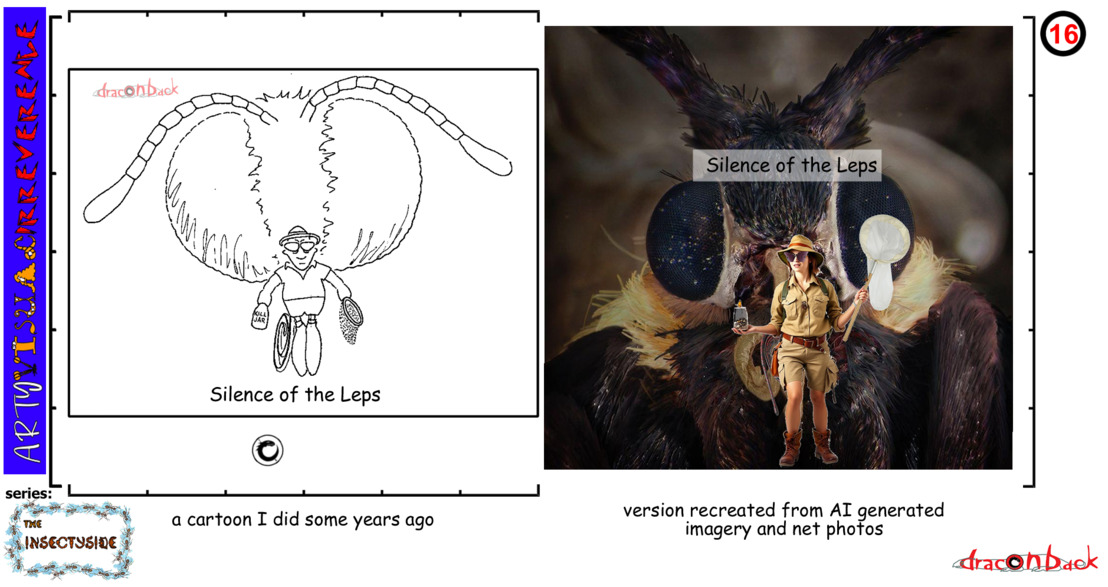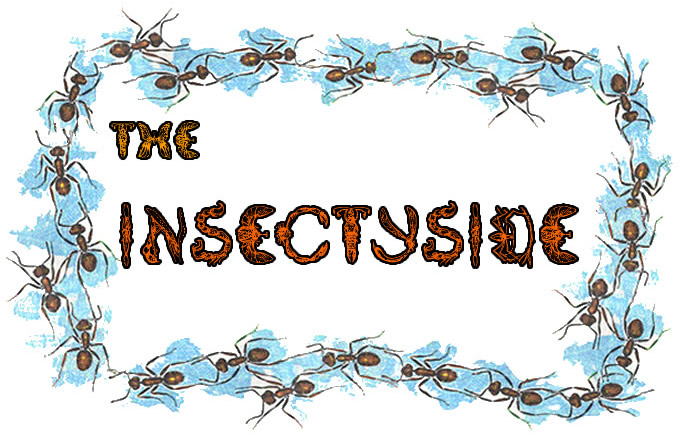|
|
Death's-head Hawkmoths, Acherontia atropos or Acherontia styx, feature prominently in the movie Silence of the Lambs. "Leps" is entomologists' slang for members of the order Lepidoptera, the butterflies and moths, to which Hawkmoths obviously belong. Members of the order are distinguished by their scaled wings, which display an array of vibrant patterns and colors. Lepidopterans have a coiled proboscis for feeding on nectar, and their antennae vary between species—club-shaped in butterflies and feathery or filamentous in moths. They undergo complete metamorphosis, cycling through four stages: egg, larva (caterpillar), pupa (chrysalis or cocoon), and adult. These insects play vital ecological roles, including pollination and serving as a food source for other animals. Their diversity and adaptations are a marvel of evolutionary biology. In the movie Silence of the Lambs a psychotic killer shoves pupae of the Death'-head Hawkmoth down the throats of his murdered victims. This serves as a symbol of the maniac's attempt to, himself, metamorphose into a beautiful woman. Another evil character in the movie, Hannibal Lector, repeats this symbolism in a piece of "performance art": he creates a large representation of a butterfly by using sheets from the cell from which he has escaped-- and the body of a guard he has disemboweled.
Similarly, the movie poster for Silence of the Lambs (of which the images at top are parodies) also incorporates the image of a Death's-head Hawkmoth, which, in turn, incorporates an image of the 1951 Philippe Halsman/Salvador Dali photographic piece In Voluptas Mors. The work arranged seven nude female bodies to form a human skull—a literal embodiment of the Latin phrase meaning "in pleasure, death"—the film poster adapts this concept through the moth's natural skull-like marking, enhanced by the placement of a tiny skull image in the thorax that echoes Dalí's composition. This multilayered symbolism elegantly connects the film's themes of transformation, death, and beauty with artistic heritage, creating a visual riddle that mirrors the psychological complexity of the narrative itself.
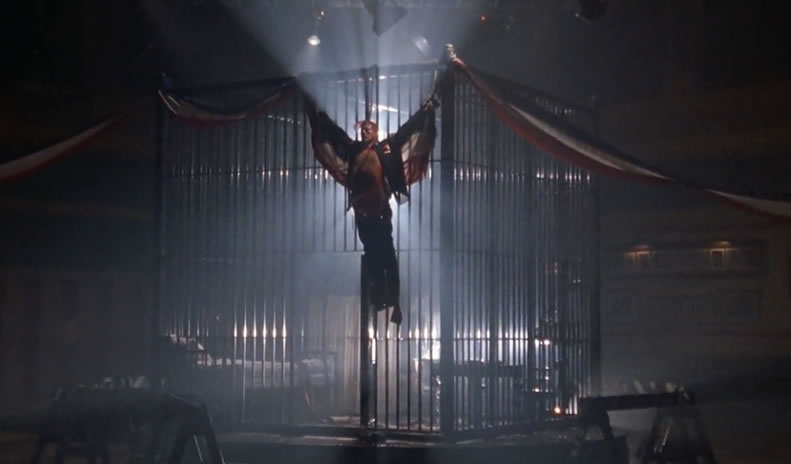 |
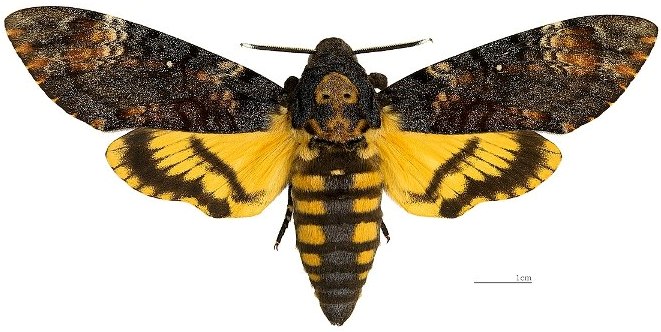 |
 |
Hannibal Lector "performance art" from Silence of the Lambs, with a murder victim arranged in a moth-like pose. |
Photo of an actual specimen of a Death's-head Hawkmoth, Acherontia atropos or Acherontia styx. |
Movie poster for Silence of the Lambs |
|
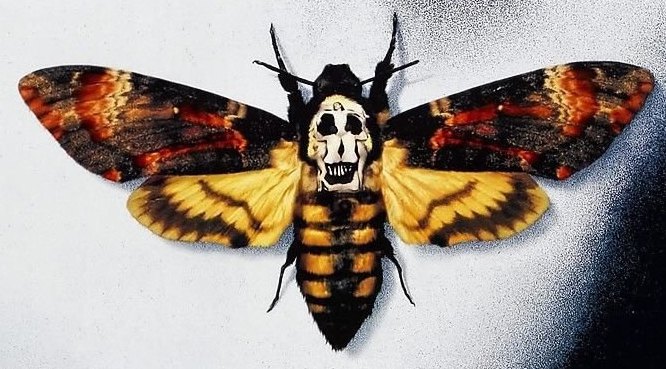 |
|
|
Close-up of Death's-head Hawkmoth from the movie poster for Silence of the Lambs (note the skull pattern on the thorax is actually a detail from In Voluptas Mors) . |
Philippe Halsman/Salvador Dali photographic piece In Voluptas Mors (1951). |
Just a cute photo of a cat to lighten the mood... wait... is that a skull pattern on its back?! |
| |
 |
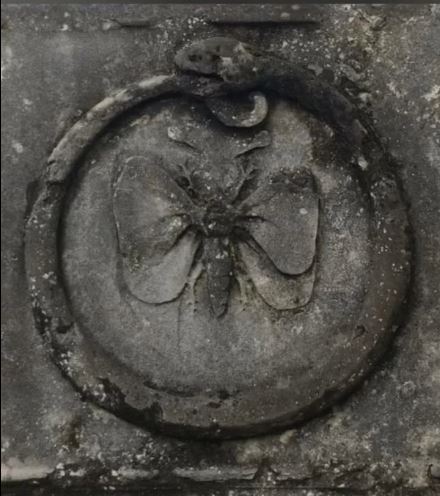 |
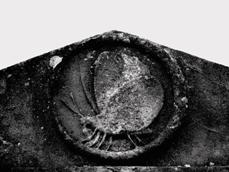 |
| The process of metamorphosis has fascinated people throughout history. It has been used in poetry and literature since ancient times as a metaphor for change and renewal (usually much more genteelly than in Silence of the Lambs . The ancient Greeks believed that this process was a terrestrial manifestation of the transmigration of the soul. In fact, the Greek word for "soul" was the same as that for "butterfly": psyche (which we use today, of course, to describe the essential elements of the mind-- and from which the word "psychotic" is also derived). As such, butterflies are a common design element in grave markers. Some ancients went so far as to believe that the soul actually took the form of a butterfly. Similarly, adherents of the cults of Mithras (in Persia) and Orpheus (in Greece) held that the human soul left the body at death in the form of a bee to wing its way to the netherworld. Beetles, cicadas and other insects were viewed in the same light in other cultures. |
| |
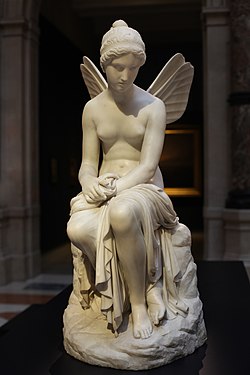 |
| Psyche Abandoned by Pietro Tenerani (1845) |
The myth of Cupid and Psyche centers on the mortal princess Psyche, whose beauty incites Venus's jealousy. Venus orders her son Cupid to make Psyche fall in love with someone hideous, but Cupid succumbs to her charms instead. He marries her on condition she never sees his face, but when curiosity compels Psyche to look at him while he sleeps, he abandons her. Devastated, Psyche undertakes a series of impossible tasks set by Venus to win him back. Her perseverance impresses the gods, who grant her immortality The story symbolizes the transformative journey of the soul (Psyche) through trials and tribulations to achieve divine love and immortality, reflecting themes of trust, redemption, and the union of mortal and divine. Examples of stories inspired by this myth include:
-
Beauty and the Beast: A tale of love overcoming appearances and initial mistrust.
-
The Frog Prince: A story of transformation and love beyond physical form.
-
Shrek: A modern twist on the idea of love transcending societal norms and expectations.
-
Bram Stoker's Dracula: the Count's love for Mina transcends time and mortality, echoing the divine and eternal love seen in Cupid and Psyche's tale. However, the darker, gothic elements of Dracula add a layer of tragedy and moral complexity not present in the myth.
|
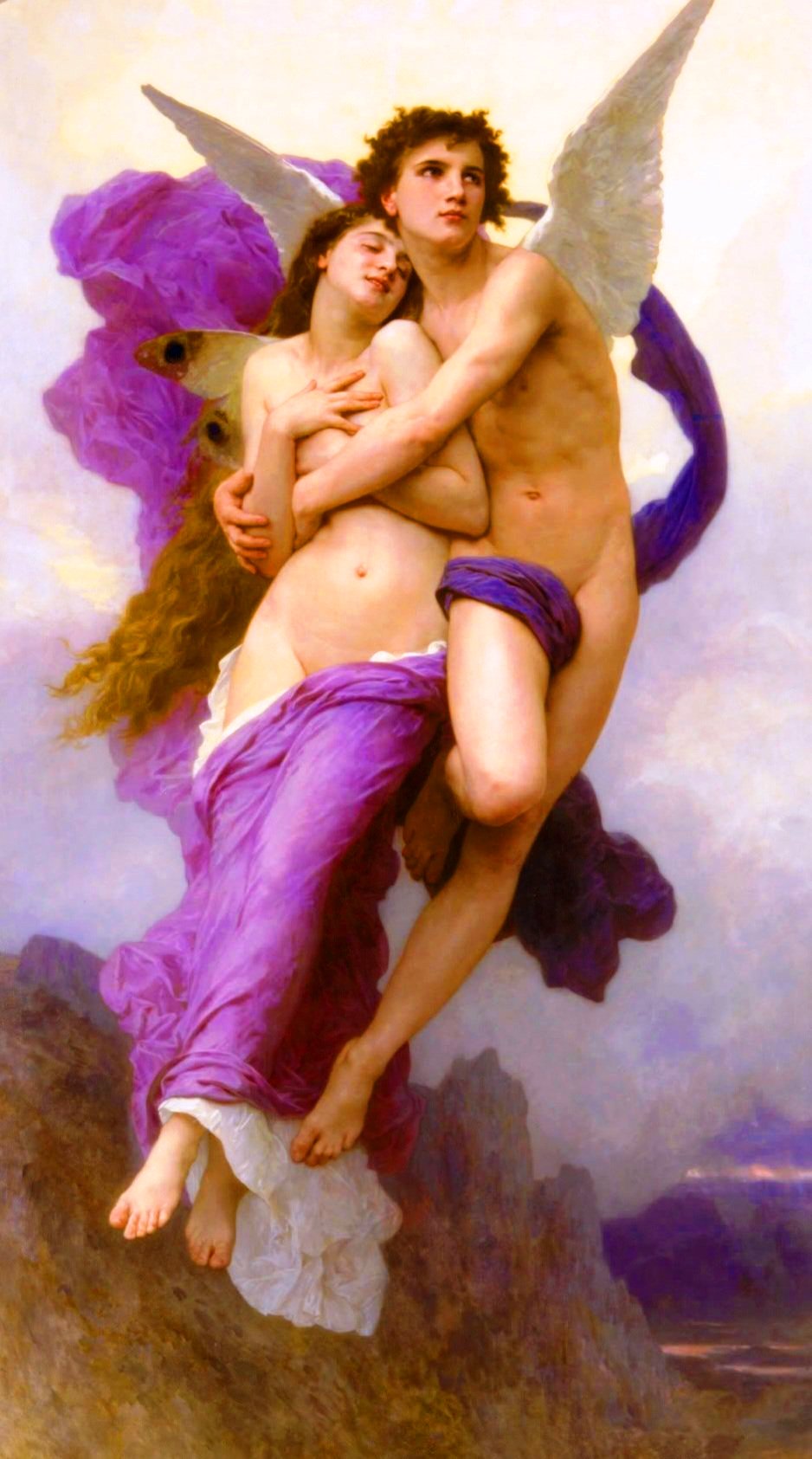 |
Abduction of Psyche (1895) by William-Adolphe Bouguereau
|
|

